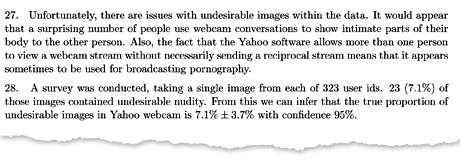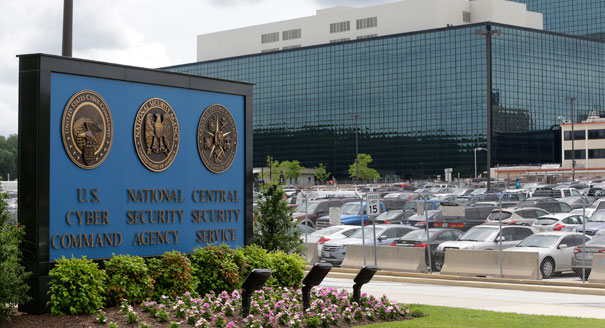The NSA, in cooperation with the British spy agency GCHQ, captured and kept millions of webcam captures from unsuspecting users, none of which were suspected of committing any crimes.
|
Advertisement |
And a “substantial quantity” of the images were sexually explicit, according to the Guardian, via Gawker. One of the documents estimated that between 3% and 11% of the images gathered contained “undesirable nudity.” From the document:
The program, called Optic Nerve, began in 2008 and was still active in 2012, according to an internal GCHQ document provided by Edward Snowden. It was designed to identify potential terror suspects through automated facial recognition software.

From the Guardian:
The system, eerily reminiscent of the telescreens evoked in George Orwell’s 1984, was used for experiments in automated facial recognition, to monitor GCHQ’s existing targets, and to discover new targets of interest. Such searches could be used to try to find terror suspects or criminals making use of multiple, anonymous user Ids.
Rather than collecting webcam chats in their entirety, the program saved one image every five minutes from the users’ feeds, partly to comply with human rights legislation, and also to avoid overloading GCHQ’s servers. The documents describe these users as “unselected” – intelligence agency parlance for bulk rather than targeted collection.
There were some measures in place to protect Yahoo users’ privacy. Bulk searches were limited to metadata only, though images from anyone with a similar username to a suspect were shown to analysts. It’s not known how much access the NSA had to the files, though information sharing between the two agencies is common.
According to the documents, there were no measures in place to prevent the gathering of photos and information from U.K. And U.S. citizens.
Unlike the NSA, GCHQ is not required by UK law to “minimize”, or remove, domestic citizens’ information from its databases. However, additional legal authorisations are required before analysts can search for the data of individuals likely to be in the British Isles at the time of the search.
There are no such legal safeguards for searches on people believed to be in the US or the other allied “Five Eyes” nations – Australia, New Zealand and Canada.
One of the documents estimated that between 3% and 11% of the images gathered contained “undesirable nudity.” From the document:
“Unfortunately … it would appear that a surprising number of people use webcam conversations to show intimate parts of their body to the other person. Also, the fact that the Yahoo software allows more than one person to view a webcam stream without necessarily sending a reciprocal stream means that it appears sometimes to be used for broadcasting.”
In a statement to the Guardian, Yahoo denied any knowledge of the program.
“We were not aware of, nor would we condone, this reported activity,” said a spokeswoman. “This report, if true, represents a whole new level of violation of our users’ privacy that is completely unacceptable, and we strongly call on the world’s governments to reform surveillance law consistent with the principles we outlined in December.
“We are committed to preserving our users’ trust and security and continue our efforts to expand encryption across all of our services.”
Final straw or just another brick in the wall?



